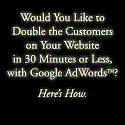

All You Need to Know About Using Exclusivity for Better Product Launches
This is a contribution by our very own Shayne Tilley.
Launching products and campaigning can be fast-moving and complex beasts. There are so many layers, and even the best-laid plans can be scrapped in an instant as it all goes amazing well, or horrifically wrong…
Two promotional tactics we use in our product launches and special campaigns on both ProBlogger and Digital Photography School are the notion of “exclusivity“, and “limiting factors“.
I thought today I’d share with you the how and why of this approach, and what we’ve learned along the way.
So what do I mean by “exclusivity” and “limits” in the context of a launch or promotion?
Exclusivity:
Exclusivity is about creating a proposition that will not be available to the general public. It’s an offer specifically for you, because you meet some sort of criteria. It might be because you’re an existing customer. It might be because you showed early interest in a product. It might be because you are a newsletter subscriber, or a member of a community. It can be anything as long as you can define it.
By me giving you this offer I’m making you feel special. You’re acknowledged and rewarded and hopefully rightly so! This can then drive two responses:
1. the “nah-nah-na-na-nah!” response
We like to brag. Sometimes it’s about how much we paid for something, sometimes it’s about how little we did. When I make you this exclusive offer, it means when you take advantage of it, you’ll have something the chump next to you paid way more for and it’s only because you were you. It’s like winning without having to even play the game! Of course you’ll head to the checkout.
2. the IOU response
By giving you this exclusive offer you immediately think that you owe me something. I’ve taken the time to create this special offer and reward you for some reason. That I value you so much I’m willing to give you something that no-one else can have. The only way you can pay me back is take up the honour in which I bestowed upon you and head to that checkout.
An example we’ve used recently on ProBlogger.com:
We soft-launched the new ProBlogger Community in the last couple of weeks, and before making it available to all, we exclusively launched it to existing members first. We provided with exclusivity in two ways: offering members the chance get into the community early and establish themselves in addition to receiving a great price as a foundation member of the site. Why? Because no matter how great the content and site technology is, it’s the people there that make it special — and we wanted to ensure our loyal problogger.com members were part of the new site. A real win-win situation.
This idea of exclusivity has been one the tech start-up community has really embraced. Take Pinterest for example: it had an ‘invite-only’ sign up process for some time. You had to request access, and when you were given it, (because you’d been ‘approved’ by them), you are much more likely to actually use the service. There are secret back-door and referral systems built-in to make you feel even more special. Whilst you’ll see what sound like legitimate reasons for this, trust me – it’s a marketing tactic. One that’s designed to create an emotional debt with the product, person, or service you are using. Which makes you more likely to stick around.
And it’s quite effective.
Limited:
When limiting your campaigns, you are communicating some sort of restrictive factor. It might be stock, it might be seats, or it could be time. By doing this, you are creating a sense of urgency. A sense that “if I don’t act now, I might miss out“. These responses are driven by our past – we’ve all missed out on something because we waited too long, and it made us feel bad. It’s the desire you have to avoid that negative emotional trigger I’m pulling by limiting an offer in some way.
How we use this on Digital Photography School:
Every single new product launch we run will have a limit. For the most part, it’s in the form of an earlybird special. For a time-limited period, readers will receive a special discount, or a special bonus for a few weeks. Over the launch period, we up the focus on this to increase the urgency. The first week we’ll focus on the product or offer and just mention that it’s Time-Limited. The next week, we will announce the cut-off date with a little more prominence, and the final email we’ll send 48 hours before that date will be the core message of the product.
With this urgency we often see more sales on the last day than we did when we first announced the product. This of course goes up a new gear when we run our 12 days of Christmas Campaign, where each deal only lasts 12 hours.
It’s not about making the sale, it’s about closing it.
With both of these techniques, it’s not about making the sale. Your products benefit and the offer still needs to do that too (sorry). What limits and exclusivity will do is just give the potential customer that little extra nudge to head on through the sale process.
Digital vs Actual
These techniques have been around longer than the internet, and digital content is actually just an adaptation of what retail stores mastered a long time ago. If you’re selling a digital product, such as a book or a video course, then as long as there’s power you have an infinite amount of stock. However if you have a service, or a course, or a physical product, you don’t just have time up your sleeve to use as a sales technique – you also have ‘While stocks last’ – just as powerful, maybe even more!
The ProBlogger team recently witnessed action that a stock/seat limitation can create. After putting a limited number of tickets (450) on sale for this years ProBlogger Event, within minutes, half of them had sold. That creates a bigger, more urgent call-to-action, as people realised they only had a short time to make a call to attend or not. If they waited they’d miss out!
… and it snowballed.
This accumulation of momentum resulted in all tickets being sold out in 6 hours and a re-engineering of the event set-up for us to allow another 100 people to attend. Which sold out quickly again!
Time and its subtleties
If you can’t use stock as a limiting factor, then time will be your best friend – just like it is on Digital Photography School.
With time there are some subtleties in language you need to take into account.
‘Ends in two weeks‘ is much stronger than ‘soon‘
‘7 days only‘ is much stronger that ‘next week‘
‘In the next 48 hours‘ is stronger than ‘In the next two days‘.
When putting your copy and messaging together, you need to think about which time terms feel closer; and ensure that you are giving specific time periods rather than just writing generic terms like ‘soon’. As I mentioned earlier, we tend to get more specific and forthright as we get closer to the end.
Be prepared to shift gears
In your campaign and launch planning, you’ll have a nice start and end time for your offer. You’ll communicate that clearly as suggested above, but you also might find yourself in the situation where you need to change things up. We’ve done so a few times when:
- Our readers demand it: Because you have a limit and things change back to normal after it’s reached, some people will miss out. If you have enough of them you might, ‘by popular demand’, bring it back if possible for a little while longer.
- Because something broke: If something goes wrong, your website might crash – or in the case of us in the last product launch on dPS, our email provider went down – you’ll have people that missed out through no fault of their own. In this case you’ll have little choice but to extend the sale for those that missed out.
Truth is better than fiction
These techniques are powerful motivators, and you might be tempted to ‘manufacture’ them. Which is essentially lying to your readers. Now I can’t stop you doing that, but in the interests of a long-term relationship with your customers, truth is much better than fiction.
If you never intended to raise your early-bird price don’t call it an early-bird offer. If you’re thinking about putting up an out-of-stock sign on your product with a warehouse full of them, just don’t.
Eventually, people will figure it out.
When we put 450 tickets up for the ProBlogger event, we only ever intended to sell 450. As a result of what we witnessed, we were fortunately able to react quickly and find room for some more. It’s that authenticity that help build the demand in the first place, and lying will break that over time.
So that’s my take on exclusivity and limits, and how we use there here at ProBlogger and Digital Photography School. I’d love to hear if you’ve used these on your own blog and how it went.
Originally at: Blog Tips at ProBlogger
All You Need to Know About Using Exclusivity for Better Product Launches
Facebook comments:
No Comments »
No comments yet.
RSS feed for comments on this post. TrackBack URL
Leave a comment
















